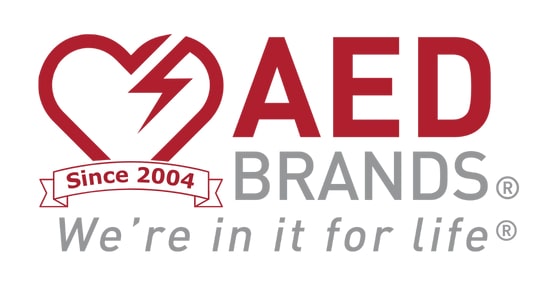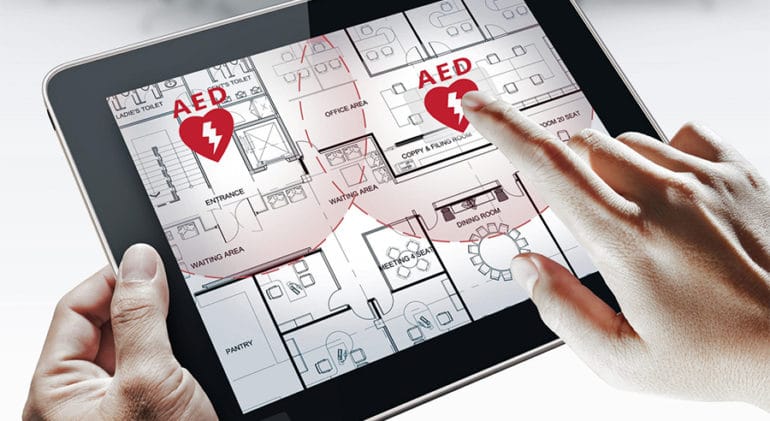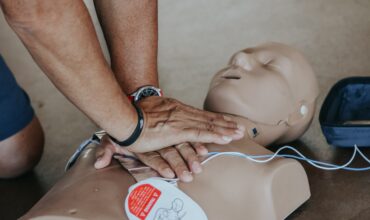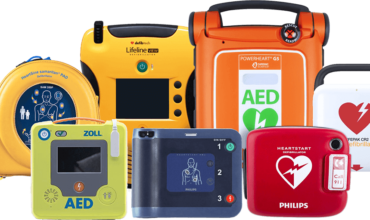
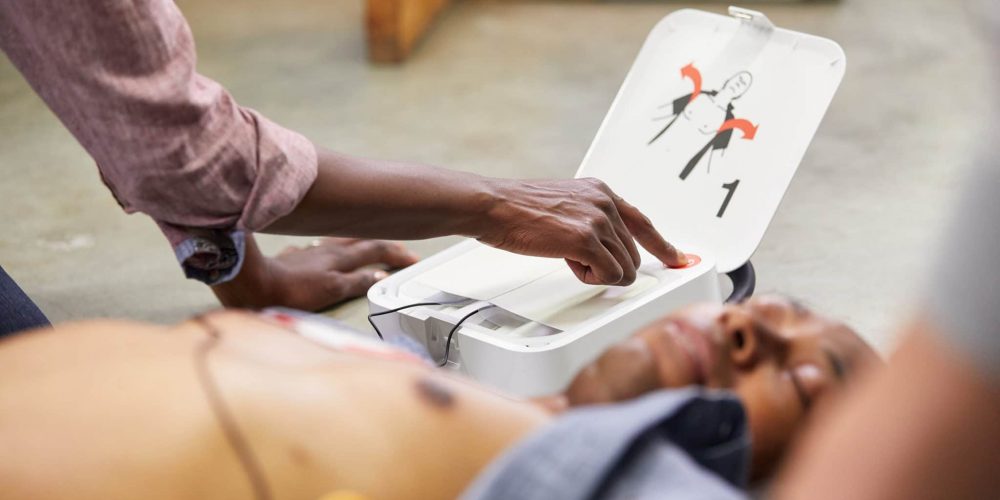
What does an AED do to the Heart?
An AED, or automated external defibrillator, is a medical device used to deliver an electric shock to a person’s heart in order to restore a normal rhythm. AEDs are commonly used in cases of sudden cardiac arrest (SCA), which is a medical emergency that occurs when the heart suddenly stops beating effectively.
An AED is designed to be used by laypersons, meaning people without extensive medical training, in emergency situations. The device analyzes the person’s heart rhythm and determines whether or not a shock is needed. If a shock is needed, the AED will prompt the operator to deliver the shock by pressing a button, or for some devices the shock is delivered automatically, like the ZOLL AED Plus.
What causes Sudden Cardiac Arrest?
SCA is often caused by an electrical problem in the heart that leads to an irregular heartbeat (arrhythmia). This arrhythmia can be triggered by a variety of factors, including heart disease, drug use, physical exertion, and genetic abnormalities.
When the heart’s electrical activity becomes chaotic, the heart may stop pumping blood effectively, leading to a sudden loss of consciousness and, if not treated immediately, death. Prompt intervention with CPR and defibrillation can often help to restore a normal heart rhythm and increase the chances of survival.
What is the survival rate for SCA?
The survival rate varies depending on a number of factors, including the cause of the arrest, how quickly the person receives treatment, and the availability of emergency medical services.
In general, the overall survival rate for out-of-hospital SCA is relatively low, ranging from around 5% to 10%. However, when bystanders perform CPR and defibrillation is administered within a few minutes, the survival rate can increase significantly, up to 50% or more in some cases.
Early recognition of SCA and rapid intervention are critical for improving outcomes and increasing the chances of survival.
For some, a home defibrillator may be a good investment for those at higher risk of SCA.
How does an AED known if a person needs to be shocked?
An AED uses electrodes placed on the person’s chest to detect the electrical activity of the heart and determine if the rhythm is shockable or not.
If the heart rhythm is determined to be shockable, meaning it is irregular and potentially life-threatening, the AED will prompt the rescuer to deliver a shock by pressing a button or following voice instructions. The shock helps to restore a normal heart rhythm by briefly stopping the heart’s electrical activity and allowing it to restart with a more regular rhythm.
It is important to note that not all rhythms require a shock, and the AED will only deliver a shock if it is necessary. In addition, an AED will not deliver a shock if it detects a normal heart rhythm or if the person is not in cardiac arrest.
Why is CPR so Important during Sudden Cardiac Arrest?
CPR (Cardiopulmonary Resuscitation) is important during SC) because it helps to circulate oxygenated blood to the vital organs, including the brain, until advanced medical care can be provided.
CPR can also help to prevent brain damage that can occur when the brain is deprived of oxygen for an extended period of time. The longer the brain is without oxygen, the greater the risk of permanent damage or death.
View cart “CPR/AED/First-Aid 2-Year Certification” has been added to your cart.
AEDs and CPR Training in the Workplace
As an employer, the safety of your employees is paramount. SCA can happen anytime, anywhere, including in the workplace. That’s why it’s important to have an AED onsite. With an AED, you can save precious treatment time and improve survival odds, as they can be used before emergency medical service (EMS) personnel arrive.
To ensure the quickest possible response, AEDs should be conveniently installed in areas where many people work closely together, such as assembly lines and office buildings. They should also be placed near confined spaces and areas where electric-powered devices are used, as well as in outdoor worksites where lightning may occur.
While the initial cost of an AED program can range from $1200 to $3000 per device, the investment is worth it when you consider the cost of a human life. Training your employees is easy and affordable. They can learn to recognize SCA, perform CPR, provide early defibrillation with an AED, and care for the victim until EMS personnel arrive.
Don’t leave your employees’ safety to chance. Visit the OSHA website at www.osha.gov or the websites of organizations like the American Heart Association, the American College of Occupational and Environmental Medicine, the American Red Cross, Federal Occupational Health, and the National Center for Early Defibrillation to learn more about AEDs and how they can protect your workforce.
Share
Share on facebook
Share on twitter
Share on linkedin
AED Brands
Implementation Guide
